The Phrygian scale weaves together exotic sounds and ancient modes to create something truly unique.
It can transform a simple melody into a mind-blowing experience, and infuse tracks with an unmistakable edge of mystery and intrigue.
Understanding the Phrygian scale is essential to unlock its full potential in your compositions.
It’s not just about knowing the notes 一 it’s about feeling the culture and history that come alive with each chord and melody.
So, as a music producer, it’s important to know all about the Phrygian scale in order to elevate your music and captivate your audience.
As well as stand out in the diverse world of music production.
In this article, we’ll break down:
- The Phrygian scale ✓
- Scale formulas, notes, and Structures ✓
- Differences between Phrygian & Phrygian dominant ✓
- Unique characteristics of the Phrygian Scale ✓
- Comparisons with other scales and modes ✓
- Practical composition techniques ✓
- Chord progression strategies ✓
- Digital music production tips ✓
- Advanced music theory concepts ✓
- Creative applications in various genres ✓
- Much more ✓
After reading this article, you’ll have a solid understanding of the Phrygian scale so you can you to harness its exotic charm and versatility.
You’ll be equipped with the knowledge and skills to create mesmerizing tracks that resonate with your listeners, elevating your music to a professional standard.
Whether you’re producing an ambient electronic track or fiery flamenco music, the Phrygian scale will become an invaluable tool in your musical production arsenal.
So, let’s dive in…
Table of Contents
- What is the Phrygian Scale?
- Understanding the Phrygian Scale Formula
- Phrygian Mode Vs. Phrygian Dominant Scale
- Comparison with Other Scales & Modes
- Bonus: The Unison Phrygian (Spanish) Advanced Scales MIDI Collection
- Building Chord Progressions with the Phrygian Scale
- The Phrygian Scale and Digital Music Production: Tips & Tricks
- Advanced Concepts in the Phrygian Scale
- The Phrygian Scale: Final Thoughts
What is the Phrygian Scale?
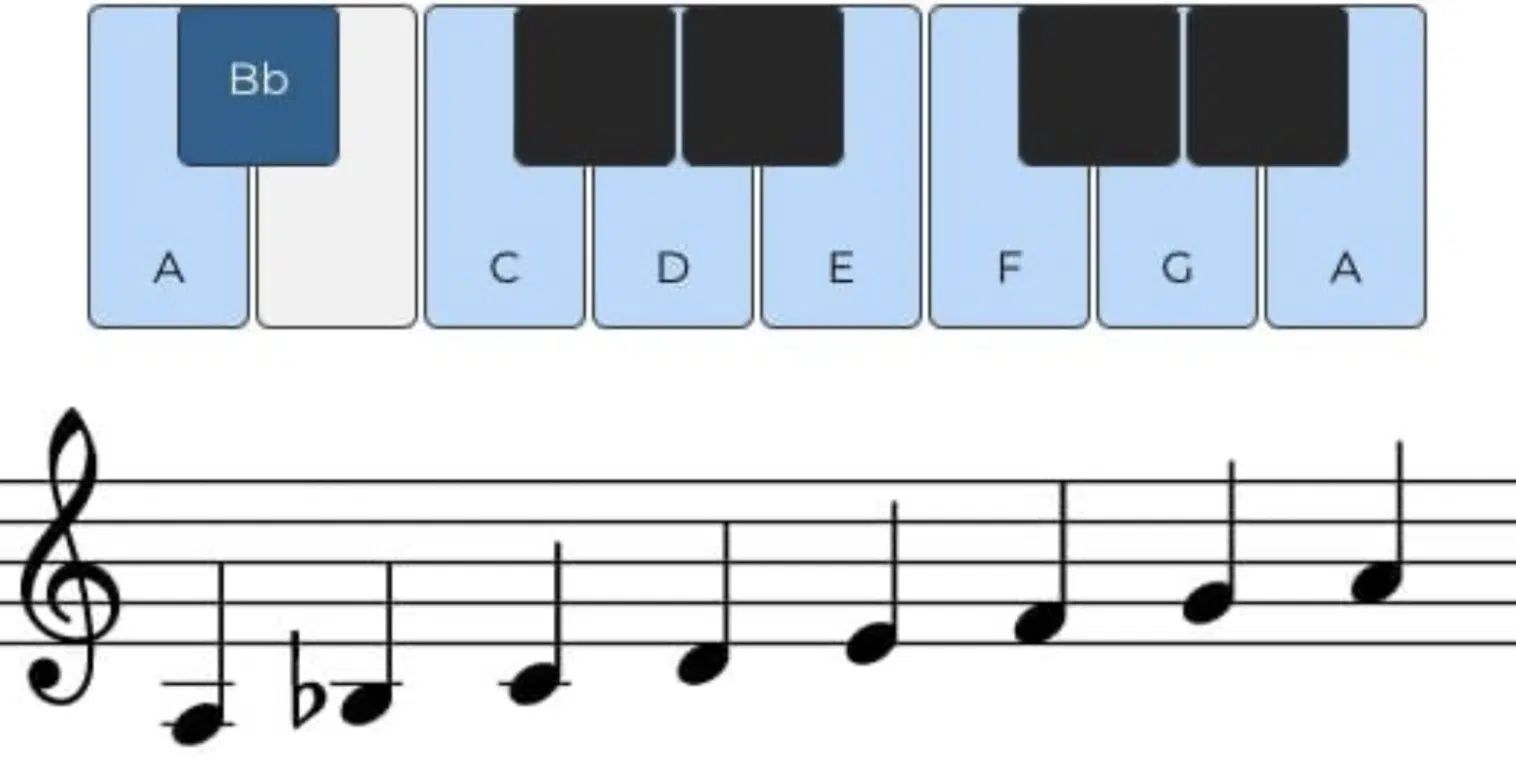
The A Phrygian Scale
The Phrygian scale (also known as the Spanish gypsy scale) is renowned in the music theory world for its distinctive and exotic sound.
Originating from the ancient kingdom, it is the third mode of the major scale and is characterized by a natural minor scale with a lowered second degree.
In the key of E (E Phrygian), the Phrygian scale consists of the notes E-F-G-A-B-C-D, starting on the E note and following the natural minor scale of C major.
This scale is more than just a series of notes 一 it’s an auditory journey through history and culture.
The Phrygian scale formula, which consists of:
- A root note
- A minor second
- Major second
- Perfect fourth
- Perfect fifth
- Minor sixth
- Minor seventh
It creates a mesmerizing sound that is both ancient and modern.
This modal structure is what sets the Phrygian scale apart from other scales and modes.
In digital music production, the Phrygian scales unique sound palette makes it a favorite among producers looking to add an exotic or mysterious flavor to their songs.
Whether it’s the haunting E-F-G sequence or the vibrant G-A-B-C progression, the Phrygian scale offers a world of creative possibilities.
Understanding the Phrygian Scale Formula
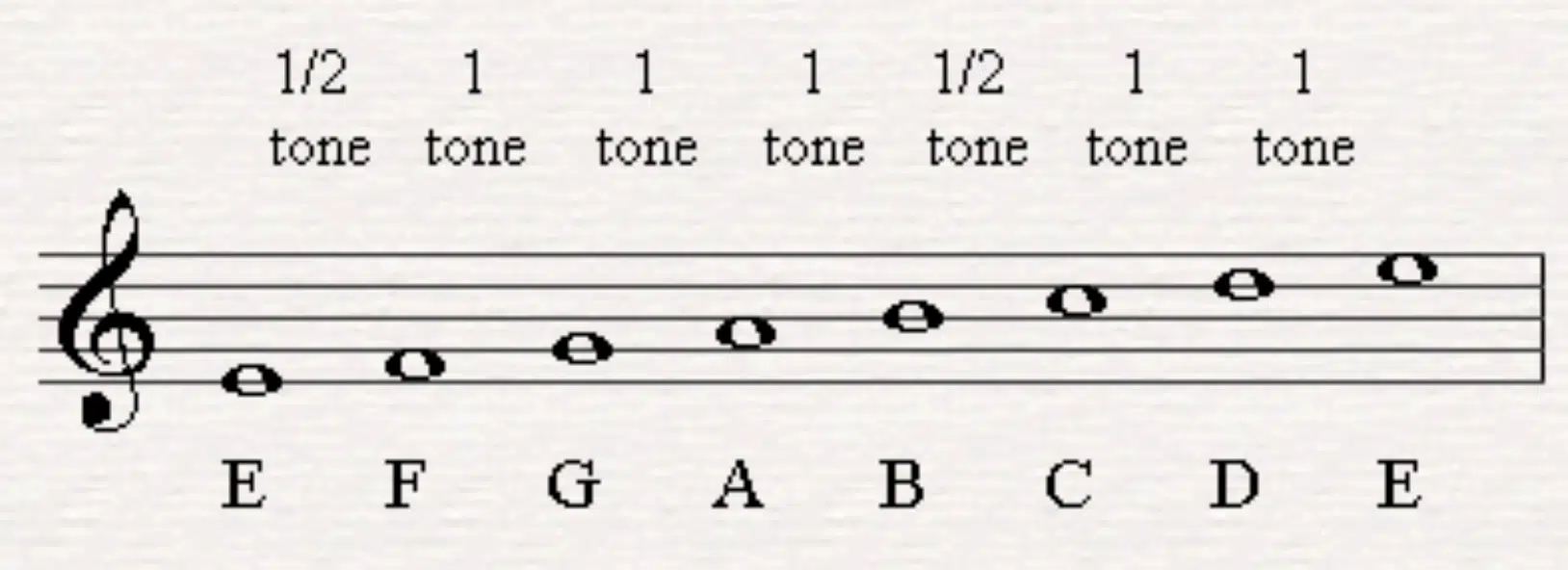
The formula of the Phrygian scale is key to achieving its enigmatic sound.
By understanding the intervallic structure, you can better grasp its exotic essence.
The scale is constructed by a sequence of half and whole steps as follows
- Half step
- Whole step
- Whole step
- Whole step
- Half step
- Whole step
- Whole step
This pattern, starting from any root note, forges the Phrygian scale.
If you’re not familiar with root notes or half/whole steps, we’ve got you covered with our music theory article.
For example, take the E Phrygian scale (comprising the notes E-F-G-A-B-C-D).
The E-F interval is a minor second, F-G is a major second, and so on 一 following the Phrygian scale formula.
Understanding these intervals is crucial for harnessing the scale’s full potential in music production, especially when creating melodies and chord progressions.
NOTE: Exploring the Phrygian scale’s origins leads you to ancient music theory, where concepts like the chromatic genus and the enharmonic genus played a pivotal role.
Phrygian Mode Vs. Phrygian Dominant Scale
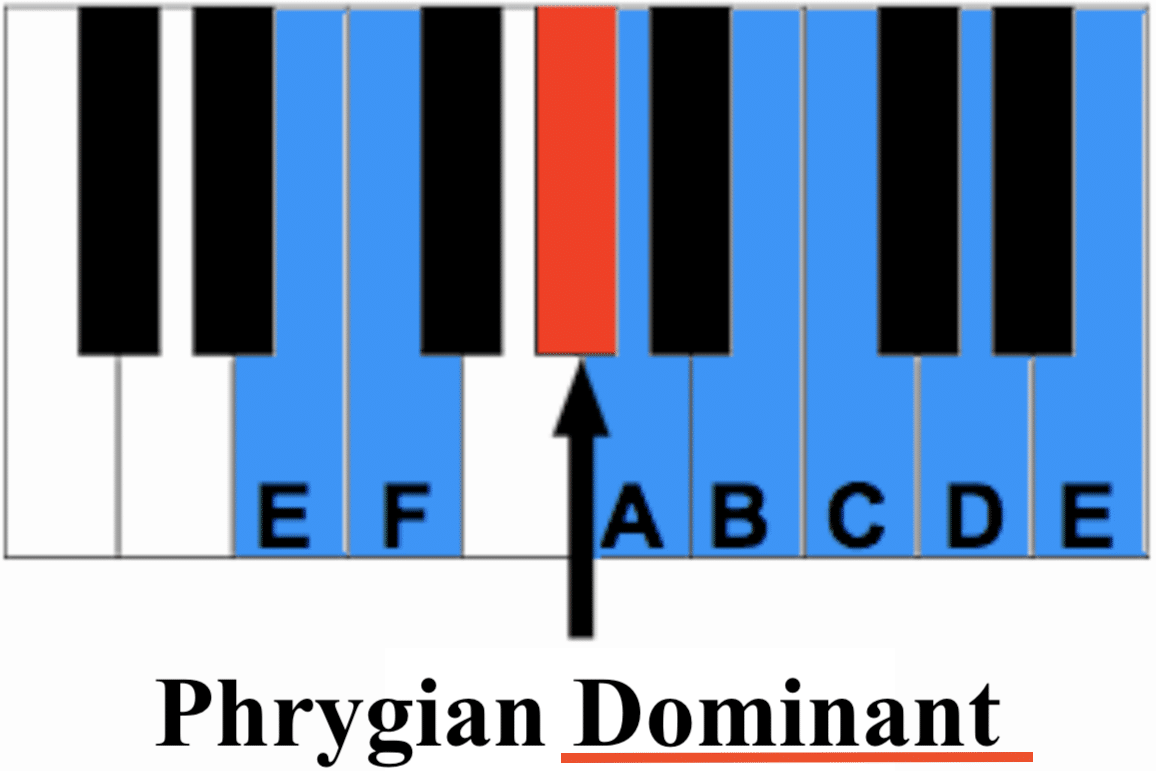
The Phrygian mode and the Phrygian dominant scale (though similar in name) exhibit distinct characteristics.
The Phrygian mode, a natural minor scale with a lowered second, thrives in its use in various musical genres, from flamenco music to rock and even jazz.
The signature minor second interval of the Phrygian mode creates a sound that’s deeply rooted in traditional Spanish music.
The Phrygian dominant scale (with its distinctive raised minor third), often referred to as the Spanish gypsy scale, is a variation of the harmonic minor scale.
It is characterized by a raised third degree.
For example, in E Phrygian dominant (containing the notes E-F-G#-A-B-C-D), the G# introduces a major third interval, distinguishing it from the modern Phrygian mode.
- The Phrygian mode 一 Offers a darker, more mysterious sound.
- The Phrygian dominant 一 Brings a brighter, more aggressive edge, often found in flamenco music and Middle Eastern music.
The choice between the Phrygian dominant mode and Phrygian dominant scale can significantly influence the mood and tone of a song.
-
Unique Features of the Phrygian Scale

The Phrygian scale’s uniqueness lies in its minor second interval and its placement as the third mode of the major scale.
This minor second (or semitone) leap from the root note is what gives the Phrygian its distinctive eastern sound
It sets it apart from the natural minor scale and other modes like the Dorian mode or Lydian mode.
Additionally, the Phrygian scale’s use of the same notes as its relative major scale 一 For example, E Phrygian using the same notes as C major (C-D-E-F-G-A-B) 一 allows for intriguing modal interchange possibilities.
This feature enables composers to create diverse soundscapes, seamlessly transitioning between moods and textures.
Comparison with Other Scales & Modes
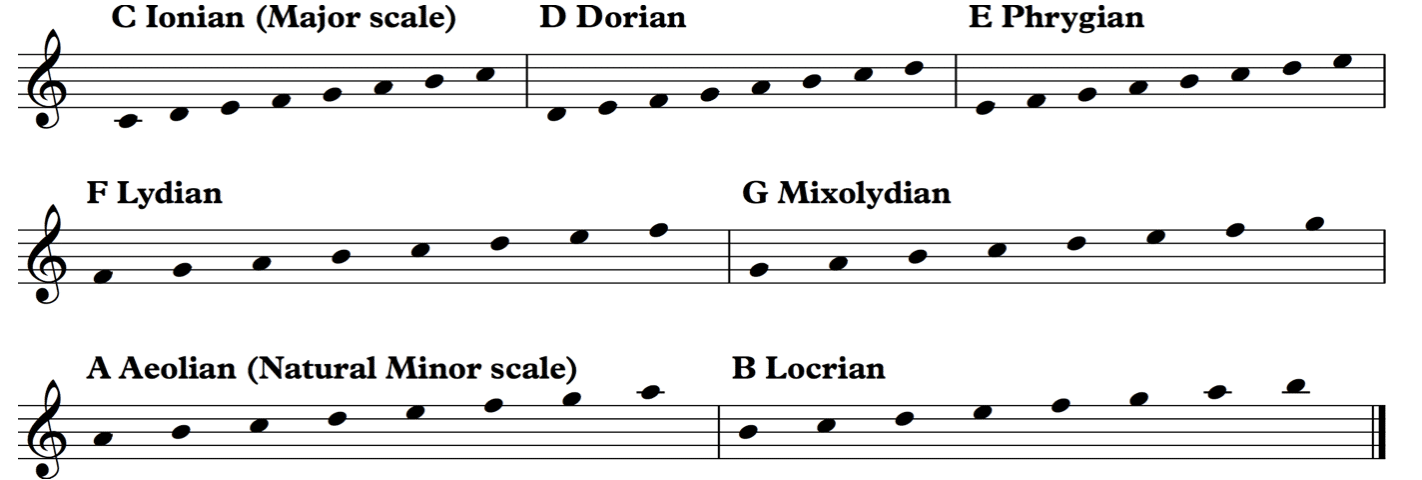
When compared to the natural minor scale, the Phrygian scale stands out due to its lowered second degree.
For example, the E Phrygian scale differs from the E natural minor scale solely by the second scale degree: F in Phrygian versus F# in natural minor.
This subtle change imparts a distinctly exotic character to the Phrygian scale.
In comparison to the Lydian mode (which is the fifth mode of the major scale) the Phrygian mode offers a contrasting sound palette.
The Lydian mode, with its raised fourth scale degree, exudes a brighter, more ethereal quality, in contrast to the Phrygian’s darker, more somber tone.
The Dorian mode (not to be confused with the Locrian mode/Locrian scale), another popular scale in music, shares some similarities with the Phrygian mode.
However, it differs in its sixth scale degree.
For instance, the E Dorian scale (comprised of the notes E-F#-G-A-B-C#-D) has a natural sixth, in contrast to the lowered sixth in the E Phrygian scale.
This difference gives the Dorian mode a less tense and more harmonically stable sound.
Lastly, the major scale, or Ionian mode, serves as the parent scale for the Phrygian mode.
The major scales sequence of whole and half steps is altered in the Phrygian mode to create its unique sound.
For example, while the C major scale contains the notes C-D-E-F-G-A-B, the E Phrygian mode rearranges these notes starting with E and altering the intervals.
These examples are all ideal for getting more acquainted with the Phrygian mode in all its greatness.
-
Using the Phrygian Scale in Composition

The Phrygian scale can be a powerful musical tool for creating atmospheric and emotionally charged music.
The scale’s distinct intervals, particularly the minor second, provide a rich foundation for creating melodies and themes that evoke a sense of:
- Mystery
- Intrigue
- Exoticism
An effective way to employ the Phrygian scale is through modal interchange 一 blending it with related keys and scales.
For instance, transitioning from a C major chord progression to an E Phrygian melody can create a sudden, captivating shift in mood.
This technique is particularly useful in digital music production, where the exotic sounds of the Phrygian mode can add depth to EDM songs.
Bonus: The Unison Phrygian (Spanish) Advanced Scales MIDI Collection
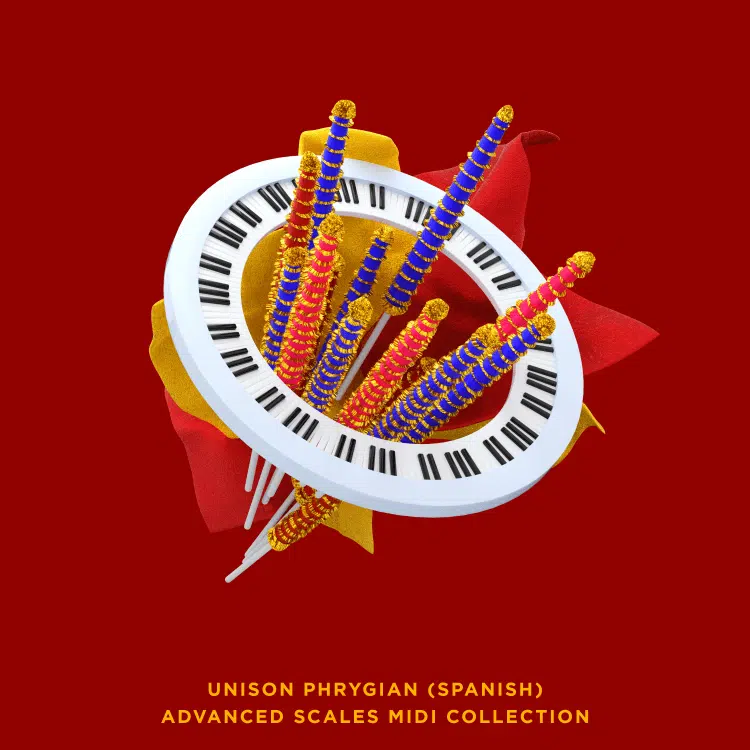
The Unison Phrygian (Spanish) Advanced Scales MIDI Collection is the ultimate way to masters the Phrygian scale.
It draws inspiration from the essence of what makes the Phrygian scale so intriguing and can help you infuse your tracks with a unique, hypnotizing atmosphere.
This invaluable collection is a combination of meticulous research, analyzing top Phrygian tracks on Billboard, Spotify, etc. to decipher the common threads in the most addicting:
- Chords
- Progressions
- Melodies
In turn, it offers over 1,100+ of the very best MIDI sequences available today, created to enhance your music production process.
You can use all of them as is, or edit them to your specific taste (the power of MIDI).
Whether you’re creating leads to drive your track, plucks to fill the high-end, pads to add movement, keys for structural foundation, or arpeggios for finishing touches, this pack provides all the most professional elements.
It’s designed to eliminate the need for extensive music theory knowledge 一 offering an instant, perfect-sounding foundation for your tracks.
With this collection, you get the opportunity to stand out by using rare scales and patterns, making your music sound more advanced and distinctive.
Download the Unison Phrygian Advanced Scales MIDI Collection Now
Building Chord Progressions with the Phrygian Scale
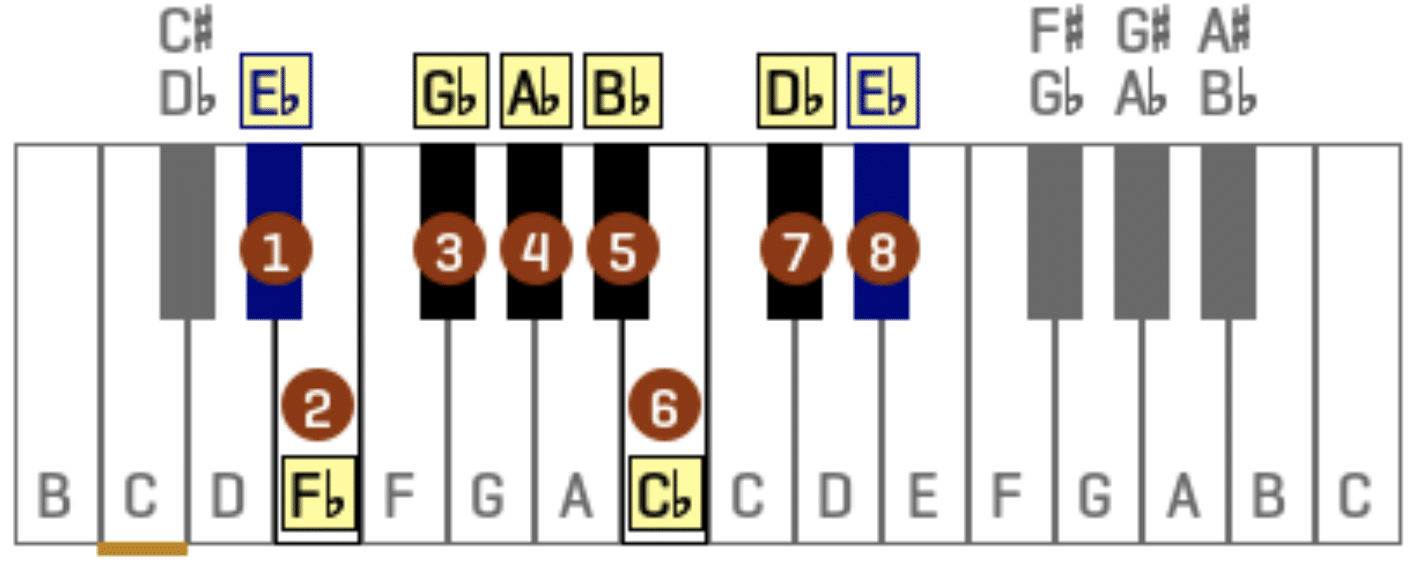
Creating chord progressions using the Phrygian scale involves understanding its characteristic intervals and how they interact.
A common progression in E Phrygian might involve chords such as:
- E minor (E-G-B)
- F major (F-A-C)
- G major (G-B-D)
It capitalizes on the scale’s exotic tension and release.
The Phrygian dominant scale, with its raised third, offers even more possibilities.
A progression like E major (E-G#-B), F major, and G major can add a dramatic, flamenco-like quality to a piece.
This blend of minor and major elements within the Phrygian dominant scale is what gives it a unique edge in composition.
Additionally, integrating the Phrygian scale with other modes, like the Dorian or Lydian, can yield complex and interesting harmonic textures.
For example, switching between E Phrygian and E Dorian chord progressions can create a dynamic and engaging musical narrative.
If you’d like to know more about creating unique chord progressions, we’ve got you covered.
-
Creative Uses of Chords

Beyond traditional progressions, the Phrygian scale enables you to play around with various chords.
For example, you can add sophistication to your Phrygian-based track by incorporating:
- Extended chords like E minor 7th (E-G-B-D)
- Altered chords can add sophistication to a Phrygian-based composition
These chords can be especially effective in jazz or progressive rock contexts.
Using the Phrygian scale in chord voicings on different instruments, such as guitar or piano, can produce distinct sonic qualities.
A guitar riff in E Phrygian, using the scales notes on the fretboard, can result in a sound that is both ancient and modern.
It’s perfect for creating atmospheric music, captivating beats, or film soundtracks.
The Phrygian Scale and Digital Music Production: Tips & Tricks
In the realm of digital music production and music theory, the Phrygian scale can be a versatile tool.
Take Kendrick Lamar’s hit, ‘Humble’ (above) which uses a Phrygian chord progression of i-bII-i-iv, or Cm-Db-Cm-Fm.
Here are some tips and tricks to help you master this exotic scale quickly.
-
Tip #1

Layering synths with Phrygian melodies or using scale-based MIDI sequences can create rich tones and textured soundscapes.
You can play around with scale degrees digitally, like emphasizing the minor second (or other minor intervals) or the flat sixth, can highlight the scale’s unique qualities.
Once you hear the intriguing qualities, tones, sounds, etc. it can bring forth, you’ll understand its appeal.
-
Tip #2

Sound design with the Phrygian scale is the key to creating entrancing songs.
It can involve utilizing its intervals to create tension and release in electronic music.
Some examples include a bassline following the E-F-G progression, which can provide a driving, hypnotic rhythm.
As well as lead synths playing the C-D-E-F sequence, which can introduce an airy, mysterious element.
-
Tip #3

Another tip for producers is to play around with the Phrygian dominant in remixes or electronic compositions.
The scales exotic flair can transform a standard track into something with a distinctive, world music vibe, especially when combined with traditional instruments like the guitar or piano.
Remember, the key is playing around and experimenting with the Phrygian scales to discover new and unique sounds.
Advanced Concepts in the Phrygian Scale
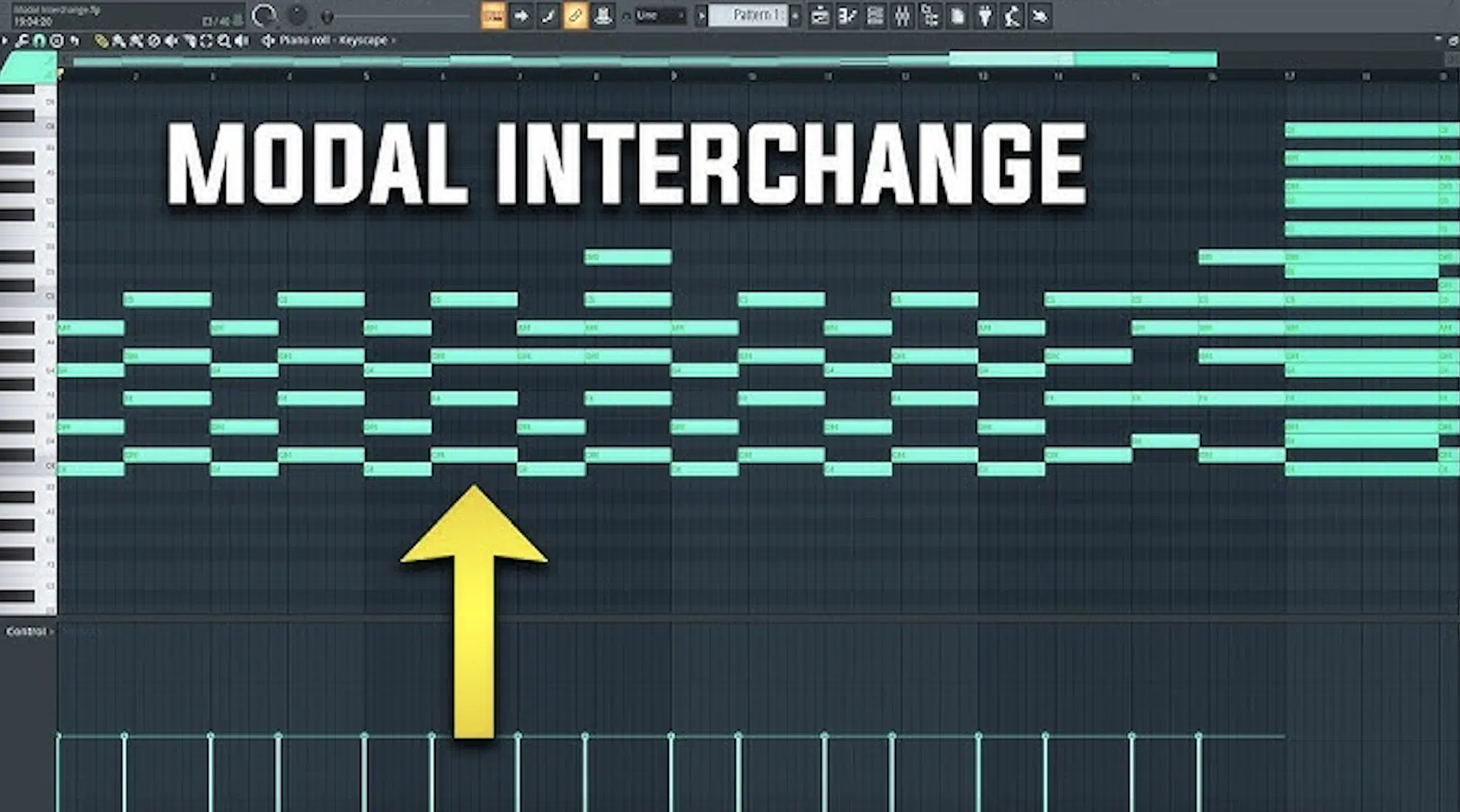
Phrygian & Aeolian (Modal Interchange)
Delving deeper into the Phrygian scale, we come across advanced concepts like modal interchange and its implications in music composition.
The ability to switch between the Phrygian scale and its relative keys allows for a vast array of creative possibilities.
For example, playing from C major (comprising the notes C-D-E-F-G-A-B) to E Phrygian in a composition can dramatically alter the mood.
It introduces a more somber or mysterious atmosphere.
The scale degrees of the Phrygian scale are also fundamental in creating its characteristic sound.
Understanding how each note, from the root to the minor seventh, contributes to the overall feel of the scale is essential for advanced composition and arrangement.
Plus, it will help you further enhance your music theory skills.
-
Bonus: Phrygian Scale in Film Music and Soundtracks

The Phrygian scale’s exotic and mysterious qualities make it an excellent choice for film music and sounds/tracks.
Its ability to convey certain emotions is invaluable in scoring scenes that require a strong emotional impact.
These include:
- Tension
- Suspense
- An air of the unknown
Composers often use the Phrygian mode to underscore scenes set in exotic locations.
They also use the medieval Phrygian mode to enhance the mood of a suspenseful narrative.
The scales unique intervals can evoke a sense of ancient mystery or foreboding 一 making it a powerful tool in the hands of a skilled producer or audio engineer.
The Phrygian Scale: Final Thoughts
The Phrygian scale, with its roots in ancient musical traditions and its modern applications, offers a unique blend of mystery and intrigue to any track.
Understanding and mastering this scale not only enhances your skill set as a music producer but also elevates your tracks.
It will set them apart in the competitive world of music production.
What we covered today will help you explore this exotic scale creatively and professionally so you can make chart-topping, captivating music.
You’ll be surprised at the unique variety of sounds you’ll discover.
Until next time…







Leave a Reply
You must belogged in to post a comment.